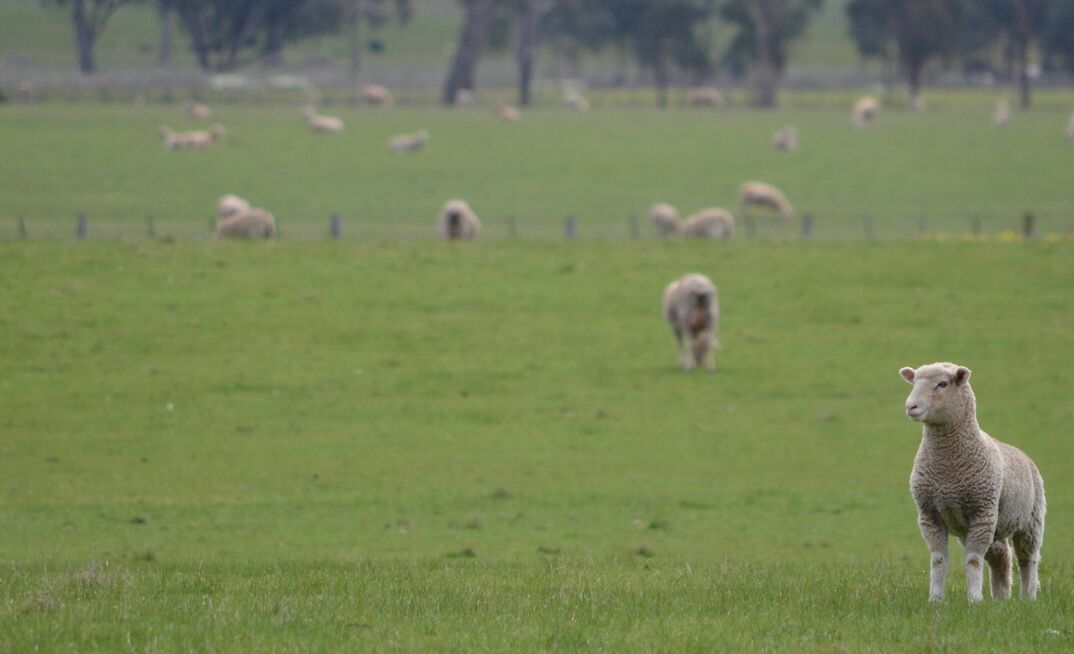QUALITY sucker lambs could attract a significant price premium later in the year if there is a lack of supply from the southern states, according to Mecardo.
Mecardo analyst, Jamie-Lee Oldfield, reported yesterday the Eastern States Trade Lamb Indicator (ESTLI) is sitting above the five and 10-year averages, and while a surge in spring suckers is likely to bring about the usual price dip, it will be from much stronger levels than last year.
"Sucker season is upon us in New South Wales, and despite the volatility of the lamb market continuing week to week through July, the general upward trend has created a bit of positivity for producers as we head for spring," she said.
"Dry conditions in the more southern states could see new season lambs hit the market later than usual, or held over, depending on what spring brings in terms of rain."
YOU MIGHT ALSO LIKE
LAMB PRICES ARE FINALLY RISING
Oldfield said the ESTLI has finally risen, which is expected during the winter, and averaged 817 cents a kilogram last week. She said this is about eight per cent stronger than the five-year average for the corresponding week, and 15 per cent above the 10-year average.
"The shorter average has the ESTLI sitting within about 30c/kg of the current price, through to the end of spring, where it ends about four per cent lower," she said.
"The longer average follows a similar pattern, but is ultimately seven per cent lower by the time December rolls around."
The current weekly average trade lamb price is about 40 per cent higher than the same week last year and according to Oldfield, is at almost the same level now as it was after spring last year. However, she added by mid-September it had dropped by about 13 per cent and after climbing back to the usual trading terms for a few months, it bucked the trend by losing ground again in February.
"If we look comparatively further back, the 2023/24 financial year trade lamb indicator average price was just short of 585c/kg, which is the lowest it has sat since the 2015/16 season," she said.
"That year is also relevant as the 2014 and 2015 years were the last time we saw lamb slaughter up near 2023 and 2024 levels.
"In 2015, the spring ESTLI price fall was pretty much right on trend at 15 per cent from now through to November."
LAMB THROUGHPUT SHAPING UP TO BE MUCH THE SAME AS 2018 AND 2019
Throughput-wise, Oldfield said the lamb market could be shaping up much the same as in 2018 and 2019, with stronger slaughter numbers in the first half of the year.
"This comparison is supported by the fact that due to the poor season in many lamb-producing areas, suckers could be late to finish or directed into another market altogether, be it store lambs or held over and finished next year," she said.
In 2018, Oldfield said trade lamb returns fell 12 per cent between this time of the year and the end of spring, after a quick price hike in August. In 2019, she said the mid-winter premiums were slightly stronger, which equated to a dip of 18 per cent by the time summer arrived.
"If we use a rough average of what the above trends are telling us, and the Eastern States Trade Lamb Indicator sits, say, 15 per cent lower by the end of spring- producers should expect to sell lambs in the 690-800c/kg range over the coming months," she said.
"This puts prices below the five-year average, given the bumper years that occur in those five years, but still above the longer-term return."
While the strong supply is expected to continue, stopping any significant overall price upside, Oldfield said there could be a substantial premium for well-finished trade stock late in the spring, if the season inhibits producers in the south from finishing lambs.
























